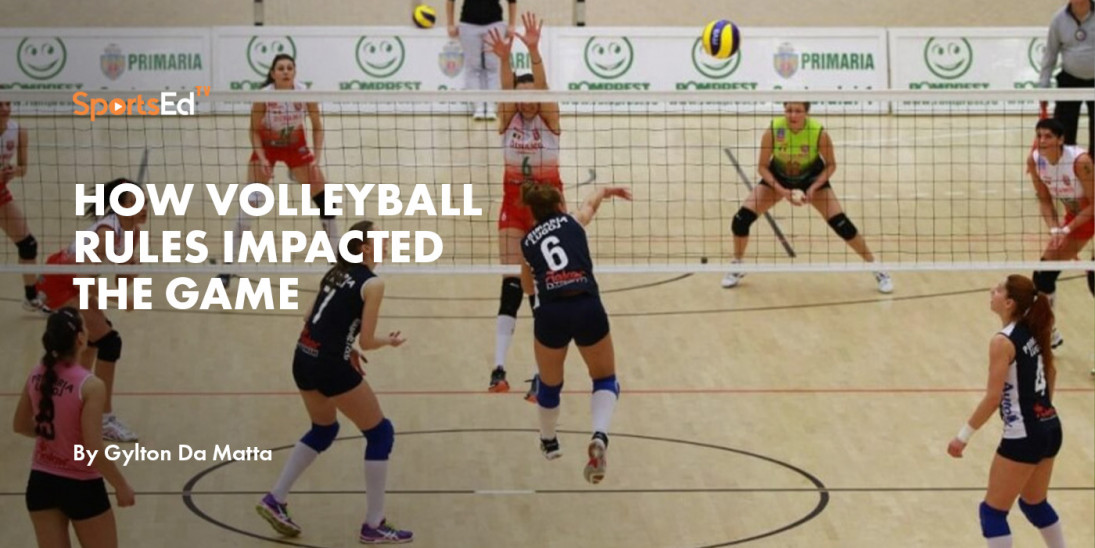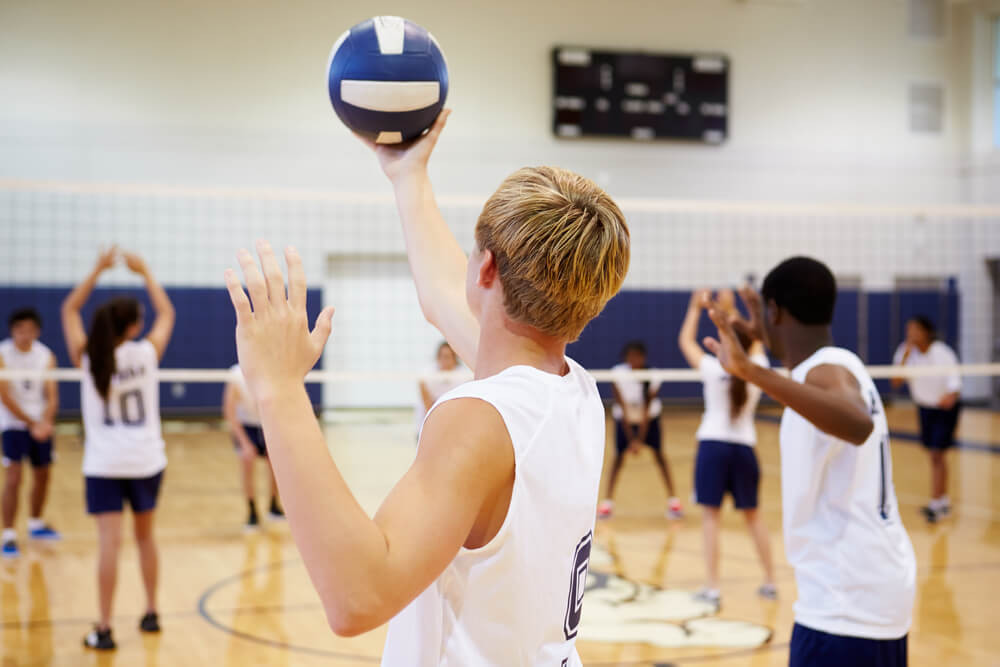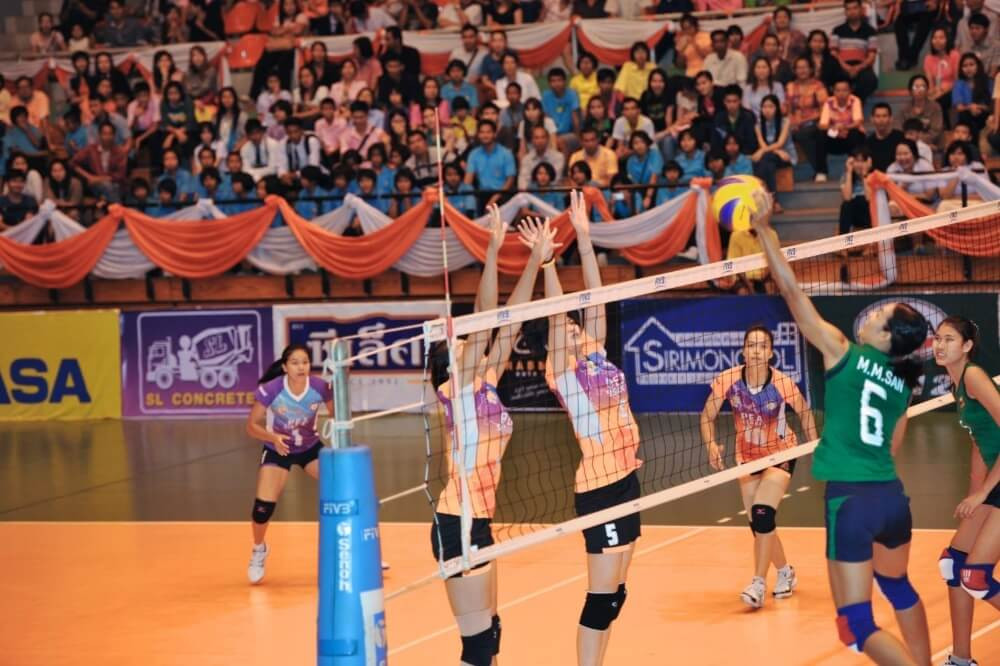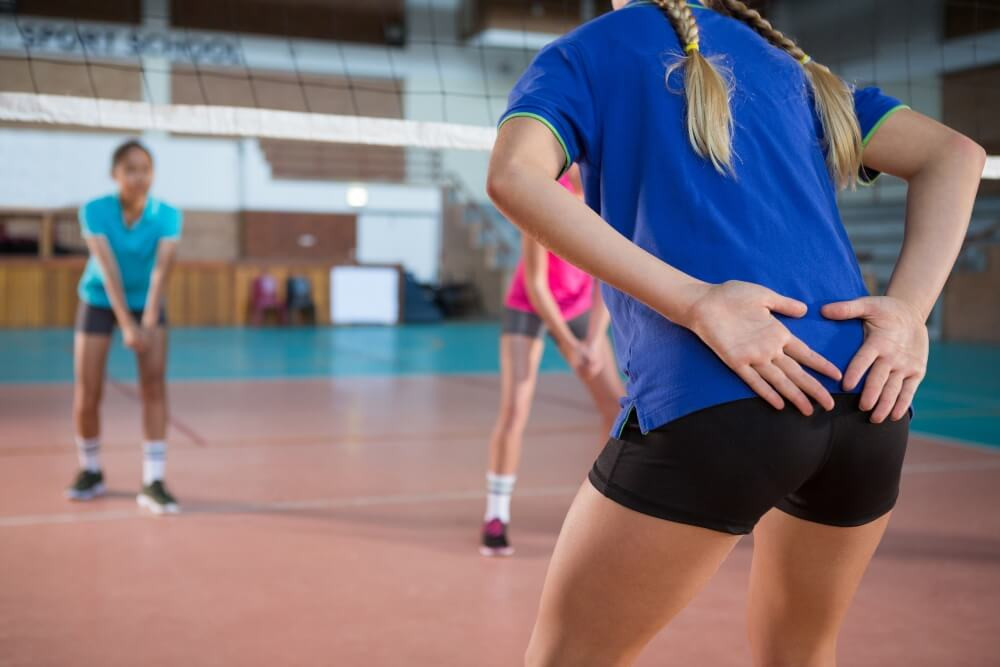Volleyball
Welcome and thanks for visiting...

The Road to Volleyball Fame
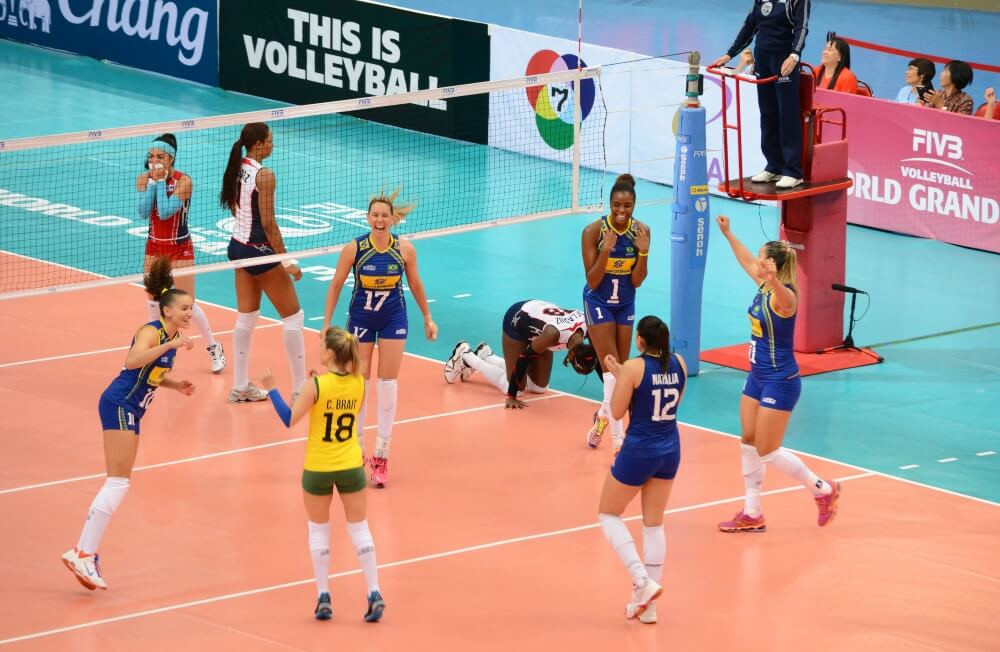
So, you’re a passionate volleyball athlete or parent or a coach and perhaps Olympic gold or some other form of fame and volleyball expertise is a goal. What’s the plan? Is there a map?
We have one for you and it’s by our own Dr. Gylton Da Matta, executive director of our volleyball channel seen below:
During my dissertation, I spent almost 60 days with the men’s and women’s Brazilian national teams in preparation for the World-Championships of 2002.
During that time, I did a thorough literature review on the topic and established the scientific criteria to define expertise in volleyball. A critical analysis based on a grounded theory and methodology revealed that a player or a team to be considered expert should demonstrate one of the following major accomplishments:
1 - Be ranked number one by the FIVB for one Olympic cycle
2 - Be a world-champion followed by earning an Olympic medal within the same cycle.
3 - Be a MVP of the World League, World-Grand Prix, Olympic Games and/or World Championship homologated by neutral evaluators from the FIVB.
4 - Demonstrate dominance in conquering titles at the Clube World Championship event. And/or demonstrate dominance for being a World-Champion, won the Olympics and winning the World championship again.
5 - Be recognized by the volleyball community as an exceptional player by the Hall of Fame.
These criteria were extensively debated and proposed by expertise scholars in many domains as well as by top scholars in the coaching expertise research field. Although coaches and athletes from the Brazilian team did not think of themselves as experts, their profiles exceeded all the criteria of expertise.
For that reason, I was able for the first time, to study and analyze the expertise development of some of the best volleyball players in the history of volleyball.
Today, we can suggest that it is ok to compete, it is ok not to punish athletes and it is ok to use boxes in order to teach, protect and provide the best volleyball practice experience to elite players.
A scientific approach to developing sports expertise is a methodology of its own.
In my case, I was able to identify true experts in volleyball and retrospectively investigate their practice history, their career paths and the best practices. Their in-depth interviews were cross-examined by their coaches’ practices plans, by the interviews of their coaches, by the videos of their practices and their performances.
And now, in the case of the men’s national team of Brazil, after following the consistencies of what they reported to me in 2000 and doing a follow up of all main findings from my research 10 years (2010) and now 20 years later.
And the process of training, the amount of practice and the quality of practice of the Brazilian Volleyball School has been consistent and coherent. Most of the findings in 2000 were counter-intuitive. The amount of practice and the procedures adopted by four of the top volleyball coaches in the world were extremely simple and yet effective.
Practices were well designed and well delivered through simple and logical pedagogical processes such as practice without, practicing similar concepts with the ball, using game situations to improve game performances and the adoption of strategies to change the environment in order to enhance individual and team performances, primarily, on passing, blocking and defense drills with the ball over the net.
Many breakthroughs and best practices were revealed, but most importantly, after 20 years, the results achieved by the national teams of Brazil consolidate the basis and the evidence that support the success of the deliberate practice approach to volleyball expertise in the Twenty-First Century.
All four expert coaches (Senior teams, U23 and U21) adopted similar strategies of training. All strived to deliver practices sharing the purpose and goals of each practice, task, and/or complex team drills.
Coaches were always concerned with technical form, technical expertise and injury prevention. All coaches demonstrated a good understanding of how to assess players both individually in their positions as well as in-game situations.
The ethnographic observations revealed that coaches consistently used elastics, targets, motivational scoring systems, screens to enhance players' perception, protective nets, mats and blocking pads to delineate specific areas for attacking and defending the ball.
Pictorial analyses and video analyses facilitate practice documentation and provided objective data to corroborate researchers’ observations as well as coaches’ practice plans. In addition to the adoption of these pedagogical principles that also increased the participation of all players involved, expert coaches customized practices for specific positions through a compensatory development of motor skills, physical abilities and mental dispositions.
For instance, middle blockers were also practicing how to set, practiced diving and practiced defense drills with a specialist coach when they were not practicing blocking and other position-specific skills. In addition to inter tasks variations, volleyball coaches adopted cross-training strategies such as the implementation of doing physical conditioning on the beach and also in swimming pools.
They also dig conditioning through weight training or just by using natural exercises. Common sense was the rule! And sports pedagogy was the science!
All Coaches had a Bachelor of Arts and/or a Bachelor of Science in sports and physical education. Therefore, coaches also demonstrated a good understanding of how to give feedback at the appropriate rate and at the right time. Feedbacks were positive and negative, but overall coaches demonstrated the deliberate adoption of positive coaching, for the most part.
The assistant coaches of both men’s and women’s team, however, often yelled and at least once a day would scold the team during defense, blocking practices or during team scrimmages. This feature represents an unfortunate legacy of the 20 years of U.S.-backed military regime in Brazil. To date, it is known that coaches have moved away from punishing and yelling at their players.
The use of boxes for passing, blocking and defense in the morning sessions have inspired me to create a code for all practice plan files that followed the color codes of coaches for technical, tactical and psychological/mental development those were yellow, green and blue boxes.
All practices were designed in a logical order and diligently delivered. When a practice was badly executed, I noticed that coaches would go back and repeat the same practice in the very next day. In the night, coaches would reflect why the drill or practice was not successful and changes would happen without any constraint or remorse.
Excellence was the goal!
Most coaches were never satisfied with a good execution but most importantly, the players would be the first to say if practices were satisfactory or not. When players grasped a complex concept, they would certainly expand their practices and get 20 more repetitions of that drill, exercise and/or task.
More Fundamental Skills for the Expert Players of the XXI Century
When I asked coaches what content represented the fundamentals of volleyball, the combined answer of all coaches resulted in the following.
The 12 fundamentals of volleyball in the XXI Century were (1) serving, (2) passing, (3) setting, (4) attacking, (5) blocking, (7) defense skills, (8) use follow-throughs such landing/rolling/diving, (9) ball control, (10) mental disposition not to make mistakes or avoiding unforced errors, (11) verbalization of clear understanding of the game, counting or always keeping score of points, constant loud communication, self-talk/talk aloud and (12) intentional team communication and celebration of each successful performance.
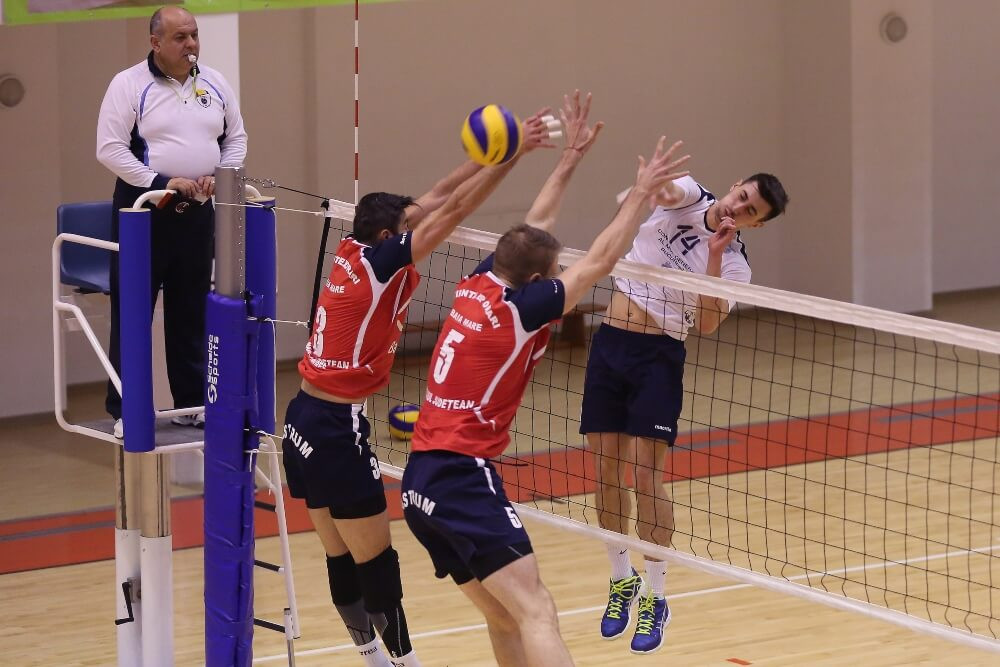
What Common Activities Did Elite Team Use in Practice or in Games?
The content analyses and narrative analyses of players and coaches’ interviews revealed themes such as intentional, purposeful and desirable practice for improvement (deliberate practice to deliberately perform). Notice that the commitment to improve goes beyond the regular commitment to practice. We have observed gold medalists urging their colleagues to continue improving.
During practices coaches adopted a terminology that was very professional creating a gym culture that focused on sports pedagogy and sports science. The data also revealed that the use of scientific terminology such as motor skills acquisition monitor the heart rate, proprioception, dynamic stretching and other physiological terms were part of the normal gym language.
Simply put, the mindset and gym culture were built to achieve excellence!
We will share a typical sequence of practices, themes and activities for both men’s and women’s national teams as it relates to expert volleyball content, that very accurately followed what the best coaches’ manuals prescribe.
Dynamic stretch routines, volleyball specific conditioning and smart warmup strategies: coaches and players have demonstrated a great understanding about the use of multiple strategies of stretching, strength training and self-regulation/neuro-physiological exercises. Most routines were individualized, and players had the freedom to stop a drill and go stretch without any constraint.
There was a clear distinction between conditioning to improve strength and warmup strategies for practice and games. There was absolutely no corporal punishment, although tardiness and laziness were constantly scolded. Most players have/had their own work out plans and they used heart monitors to practice at their “zone” of optimal physiological effort.
Static stretches, PNF and partner stretches routines: The proprioceptive neuro-functional stretch was the most common methods utilized to develop flexibility. During the time of this systematic observation of top volleyball (Da Matta, 2004), static stretches were visible, but the dynamic stretching was more common. I have observed that partner stretches happen in flexibility sessions guided by a master strength coach. Very often, coaches insisted in using playful icebreakers.
Primarily, during big group practices. Tag games, frisbee or even some soccer games happened at least once a day during the evening practices. In the mornings, during individual technical development, there was a lot of video watching and individualized activities, which also included mindfulness meditation or a crisp walk around the lake as part of a warmup. Every two days there was a sequence of relaxation exercises prior to start the practice on court.
Warm-Up Strategies:
The adoption of efficient warmups relies heavily on the notion of what constitutes a “warm-up”. The concept of a good warmup in each practice needs to be fine turned with the purpose of that practice, which also relates to the goals & objectives of that given session.
Warmups become an issue at the world-class competitions due to numerous interruptions of the game warmup due to official game protocols.
The neuro-psychological variable is also often overlooked. The proper activation of the nerve system should be a priority for coaches and athletes during world-class competitions.
For instance, in the case of spiking, a content analysis revealed that watching top videos of spiking elicits proper activation of the brain through visual imagery. Below is a sequence for advanced training routines for spiking, defense in which elite coaches utilize in their spiking training.
1) Progression for spike (footwork, arm swing, contacts against the wall) – Rhythm, coordination, timing and landing.
2) Progression for overhand pass as it relates to offense and setting.
3) Progression for underhand pass as it relates to offense and serve receive.
4) Ball control drills (1 on 1; 2 on 2) with and/or without the net but leading to attacking.
5) Tennis game (on the wall or with a partner over the net). Passing in diagonals! 2 v 2 competitive game with a special scoring system for attacking and scoring with a spike.
6) Modeling: Expert coaches know that players learn by watching. Eventually, player’s technique will resemble coaches’ technique (mirror neurons).
Deliberate Practice on Spiking Training – Advanced Skills
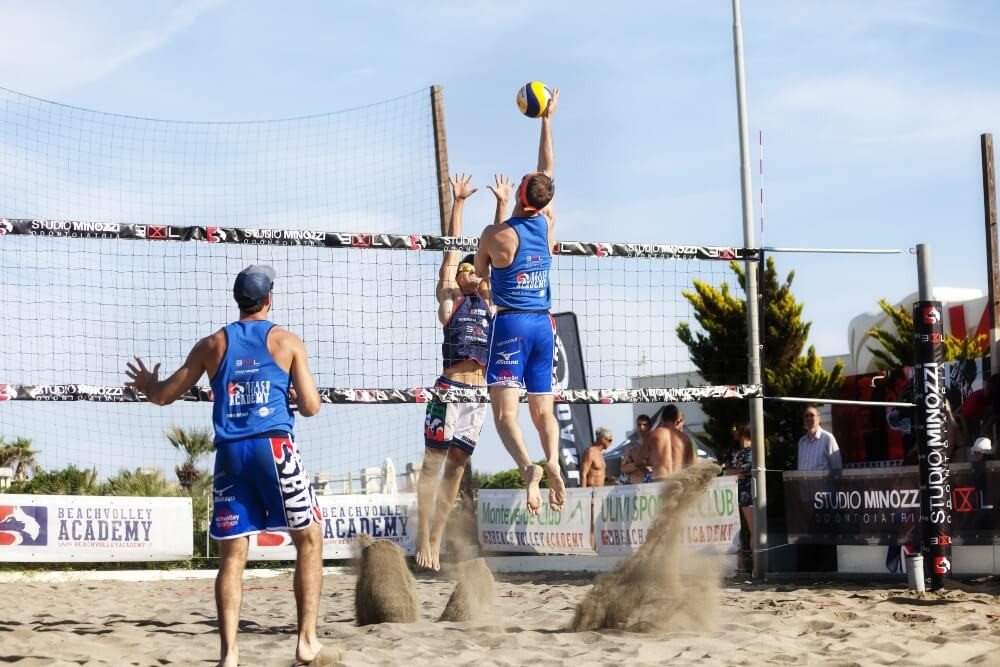
Dartfish Stromotion © revealed that 10 out of 12 players performed spiking similarly like the coach.
Defense Specialist Drills: Liberos and outside hitters did these while the other 12 players were scrimmaging. Sometimes they went to another net to do specific drills and in many occasions, they did high intense drills with not net but with coaches on boxes. We will demonstrate on demand. Pass-set-spike drills. (3 on 3 Triangle Drill: two liberos and one setter in the middle).
Other exceptional drills adopted by expert coaches:
1 - Y Drill. Up to the middle! Two hitters from pin to pin, spike very hard-driven ball to a player in P6, or P1, or P5. Variation, two consecutive balls in each player in P6. A target player stays at middle dead and after this player catches the ball, he/she distributes if to players on P4 or P2 of the opposite side of the court.
2 - Machine Gun Drills. Six players on boxes and five players on the ground, alternate attacking and tipping balls at a player who should stay in his/her own home base position. This should be a very intense and intensive drill designed to improve resistance and speed of reaction.
3 - First Base, to Release Dig Drill; 3 Diggers position to dig a first tempo attack (in base) and a second tempo ball at release position.
4 - G Drill (Intensity 4 Stages, 5 Stages or two series of Z Drill). Serial training; A player serve-receives, attacks, blocks, recover a long ball out of bounds, digs a ball in the middle of the court, hits a pipe, recovers another out of bounds ball, digs in P1, attacks in P2, blocks in P 2 and finally executes a perfect pass. This is one round. The G Drill consists of doing all of these actions from P4 towards P2 and then, from P2 toward P4. Fun challenging drill.
5 - Down and Crown Drill. Low and high defense.
6 - Dig cushioning with swiss ball between arms and trunk; front and side posture with one knee down. And then, dig on the wall and coach on the box.
7 - Side digging on the ground (gym ball in between the legs). Digging ball using the side lunge position. Making sure to stabilize and start from the “ready position”
8 - Defense vs Coach plus players on the other side of the net. Coach on 3 plus 3 hitters on the other side of the net.
9 - How to do the shoulder roll in five tasks. How to do the slide in five tasks. How to do the dive in five tasks.
10 - Advanced refinements for world-class players. How to improve cut shots IN and OUT of the midline.
11 - Decision making and springboard drills applied on attacking and defense on mats.
12 - Implementation of backrow combination plays and multi-offense high-speed attack systems.
And for the Final Leg on the Journey to Volleyball Expertise, Consider What a Daily Practice Looks Like for an Expert Team and Logged Below:
A typical day of practice for expert volleyball players and coaches: (In average all players woke up at 6:00 am and most coaches woke up at 5:30 am, for more than three months of observation).
7:00 - Breakfast
7:30 - Silent time, reflections, planning for the day, checking emails, etc.
8:00 - Coaches set up the nets; Preparation of equipment and projector/tv/computer
8:30 - Warm welcome to all coaches and participants of the clinic.
9:00 - Warm-ups – Ice breakers – Volleyball Movement Training
9:15 -10:15 - Volleyball instruction/Progressions Spiking/Training Setting
How do we learn complex skills?
10:15 -10:30 - Water Break 10 min/snacks
10:30 - 11:45 - Deliberate Practice in Attacking/Instruction of Passing/Playing 3 v 3 & 4v4 games/Group A of Athletes went to do weight training/Group B, 30 minutes later.
11:45 - Stretching/Relaxation sessions/Cooldown - Closure of the morning by staff.
Check for understanding: What news concepts have we addressed?
Noon - 12:30 - Lunch; Power nap! Please rest! Some went to explore some FIVB info about Olympic news and qualifications around the world.
1:00 - 1:30 pm - Technical training/Combined skills/Butterfly Drill into Playing
1:30 - 2:30 pm - Individual skills/Position training/Tactical training
2:30 - 2:40 pm - Deliberate Practice of Challenge Drills: The Z Drill, Setters Chase, Hitters Chace and other very intense drills for intermediate to advanced level players.
2:45 - 3:45 pm - Play, Modified Games, Tactical Situations, @ coaches’ discretion
4:00 pm - Stretching/ Relaxation/Check for understanding/Review of the day
5:00 pm - Dinner
6:30 - 8:30 pm - Scrimmage between team A and team B of the National team
9:30 - 10:30 pm - Watch videos and design the practice plan for the next day…
11:00 pm - Have a light snack and lights out!
11:30 pm - Coaches’ meeting, reflections and evaluations (video analyses)… snick out to have a little of a mental break.
This was the routine of every day from Monday through Friday during the preparation for the Olympic Games of the Men’s and Women’s national teams of Brazil (in 2002, 2004 and 2008).
There are 1 billion volleyball players who want to learn awesome volleyball!

